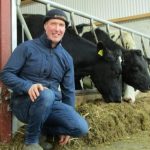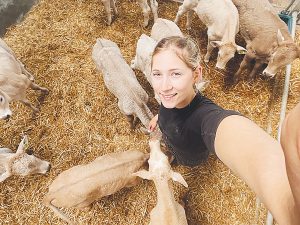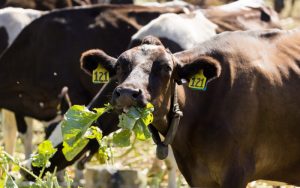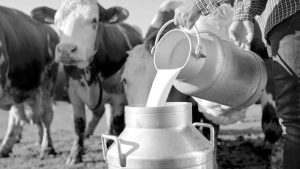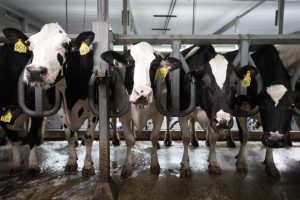
The timing, as the family tucked into the delicious offerings of farmers and growers, prepared by members of the family, was impeccable as the food purchasers remembered the size of the bill at checkout.
What generally isn’t remembered is that the food bill is now a smaller component of discretionary income than it was thirty years ago. Food prices have increased more slowly than incomes because of ever more efficient production to do with technological advances.
The dinner table questions were and are important. Scientists challenge the status quo and try to identify what knowledge is needed to make improvements.
They ask questions of themselves and others and interrogate the data collected from research, looking for insights. A basic requirement is the starting point. In the family questions, the starting point was often ‘everybody says’, even before social media.
The latest question is on the dairy cows that keep featuring in the news. Hurray for more money pumping into the economy because of record dairy prices (they aren’t – the 2013/14 price adjusted for general inflation would be $9.59; agricultural inflation is higher than general inflation, so prices haven’t kept up with costs).
Hurray for the dairy farmers producing more milk from fewer cows (herd numbers have decreased but productivity has increased).
Hurray for the Ministry for Primary Industries forecast that dairy farmers and processors will bring almost $21 billion export dollars into the country this season, 10 per cent up on last season.
But boo to the environmental impacts.
And why don’t farmers just… produce less methane, use less nitrogen and reduce cow numbers more.
Again, good questions, and farmers and scientists are focussed on finding answers whilst bearing in mind the economic considerations. These include the price of food to the consumer.
Huge advances have been made over the last 30 years due to research and development of technologies. New Zealand leads the Global Research Alliance on methane through the Agricultural Greenhouse Gas Research Centre. The Centre has been funding research investigating animals, feed, rumen bacteria (additives and vaccines) and soil carbon since being established in 2010. Approaches have included biology, chemistry, physics, engineering, computing, electronics and psychology. Researchers are based in universities, Crown Research Institutes, co-operatives and private companies. Ideas have been born on the farm as well as in the field and laboratory.
It has been and continues to be a massive effort.
The result is that dairy cows (and beef cattle and sheep) have lower environmental impacts per unit of food production than most other countries can achieve.
The natural response is to question the number of animals – great that the impact per unit of food is low, but what about the impact of each animal and the numbers?
Again, research combined with financial analysis is providing answers.
Our Land and Water, one of the National Science Challenges, has shown that changes in dairy farm practices have reduced the amount of nitrogen and phosphorus entering waterways – fencing, riparian planting and upgrading effluent systems have made the difference.
Simply reducing herd size would make some farms unviable. There are examples of reducing animal numbers and decreasing environmental impact while increasing profitability – but not very many, and the farms were over-stocked at the start. Lincoln University Dairy Farm is often used by anti-farming lobbyists to make the point, but the farm was a demonstration of what would happen. A reduction to 3.4 cows per hectare (average for the Lincoln area) from 4.3 (over-stocked) was profitable and reduced environmental impact.

Greenpeace Aotearoa wants New Zealand to follow the Netherlands and reduce cow numbers. An investment of 25 billion euros (NZ$41.9 billion) has just been announced to encourage farmers to move away from intensive farming. The starting point, however, is that the stocking rate of dairy cows per hectare in the Netherlands is twice that of New Zealand and the nitrogen loss is three times that of New Zealand. Greenpeace hasn’t mentioned either of these facts. Nor has it mentioned that whereas the Netherlands ranked 35th of 169 countries in Environment in the Legatum Prosperity Index for 2021, New Zealand was 4th. Nor did it mention that Netherlands’ farmers receive over 18 per cent of gross farm receipts as subsidies.
And the fact that the measures are targeted at cattle, pigs and poultry because of ammonia was also overlooked.
But top of Greenpeace’s forgot-to-mention list is that the Netherlands economy is dominated by export of fossil fuels which gives considerable discretionary income to the Government to allow subsidies and investment.
New Zealand farmers do not receive government subsidies, they rely on being able to farm efficiently.
So the answer to ‘why don’t farmers just…’ remains that they do, whenever it makes sense in environment, economics and social equity.
Your Christmas meal and the environment you are enjoying, is testament to their efforts.


